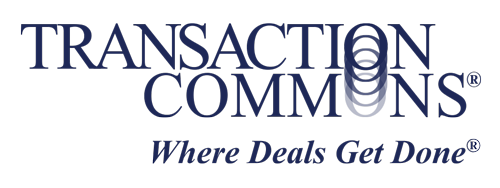Taking Care of Your Transaction

You know about “taking care of business.” But what does it mean to take care of a business transaction – especially an important M&A transaction? To us it means keeping the transaction moving forward, on time, and with organization and clarity. It means spending time, ideally every day, on the transaction and always looking for ways to make the transaction process more effective and efficient.
The different parties to a transaction will have their own objectives – some which are at odds with each other. But there is one goal that all the parties should be able to agree on: the timely, cost-effective, and accurate completion of the transaction. In that sense everyone is interested in taking care of the transaction. How do the parties help the transaction progress as efficiently as possible, without wasted time or unnecessary aggravation? It is important to treat the “transaction” as an overall process, with all parties approaching the process in an organized, efficient, and coordinated manner. The alternative approach – unfortunately all too common – is a haphazard and wasteful approach, fueled by poor communication processes.
Yes, every transaction is different. But there are common elements that form the basis for an effective transaction process. If the parties are aligned on those common elements, the goal of transaction efficiency can be achieved. What elements are essential to transaction efficiency? How do you align the participants on the essential elements from the start of the transaction?
Although the parties have a common objective of an efficient transaction process, it is often easier said than done to come to a consensus. Each party (and their professional advisors) have established ways of approaching a transaction and each party may be striving to assert control over the transaction process to their perceived advantage. Sometimes it can be difficult to get agreement on even the most routine elements of a transaction process, but it is ultimately worth the time and effort.
The key transaction process elements are: (1) identifying individual participants and defining who will be active in managing information and documents; (2) organizing transaction information (due diligence and continuing updates); and (3) managing document negotiation communications (especially versions of agreement drafts). Typically each party will sit down with their internal team and carefully discuss their approach to the transaction, including some or all of these key elements. But it is uncommon for an initial planning discussion to occur among all of the transaction parties or there to be a clearly defined transaction process that applies to everyone. Let’s look at the elements for taking care of your transaction and making the overall process as efficient as possible:
Transaction Team Definition
For most transactions, the best approach is for each party to define their transaction team and consider the input needed from within their team and then give the team members full and consistent information and document access. In some cases more selective access may be appropriate, but usually the benefits of complete team inclusion outweigh potential disadvantages. It is important for each party to designate an experienced person (with excellent organizational skills and attention to detail) to be the administrative manager for transaction activity. We refer to those individuals as “transaction administrators.” In larger transactions, the document negotiation process might be managed by legal counsel for each party. Even when legal counsel is actively involved, their efforts may be complemented in more complex transactions with support from one or more dedicated transaction administrators.
Transaction Information Organization
It is critical to establish rules governing how due diligence information is provided via the transaction “virtual dataroom.” These rules should address who may post information, when it may be posted, and then who is responsible for reviewing that information and communicating the results – both within the internal team and to the other parties to the transaction. The potential for large amounts of new information to be abruptly added to the virtual dataroom late in the due diligence process should be addressed and avoided. It is critical that all transaction participants receive notice of any new document or information postings. Similarly, rules should be established regarding virtual dataroom access visibility and what limits should be placed to seeing details about who has reviewed which documents, when, and for how long. In many situations, giving either party access to this detailed information may not be appropriate or desirable.
Agreement Version Management
Transaction participants are accustomed to exchanging document drafts by email. This is a recipe for confusion, if not disaster. The potential for inefficiency and error in email exchanges is virtually unavoidable. Different transaction participants emailing document drafts – sometimes to incomplete recipient lists, and often from multiple email addresses – leads to disorganized and ineffective communication.
It is important for transaction administrators to have a process for keeping track of each version of each document being negotiated. In some cases, weeks or months may pass between when the negotiation of a particular transaction document is completed and when the document is actually signed (or incorporated as an exhibit to an agreement being signed). There may also be a lapse of time between the circulation of a document draft and when the other transaction parties provide comments to that draft. Searching email inboxes for these earlier document drafts will be time-consuming and may not accurately locate the most current version. Trusting the other party to find and circulate the correct one is dangerous.
Ultimately agreement version management means knowing with certainty that the agreement on the closing table – ready to be signed – is the final, correct document. Electronic signing platforms create other pitfalls that we discuss in another article.
Take Care of Your Transaction
If all of the participants in the transaction promote these common elements, then a more efficient and effective transaction process is possible. Up front collaboration on these points will ultimately save time and money, and should improve the chances that the transaction will stay on track and get done on time. A platform like Transaction Commons makes transaction efficiency even more achievable.
